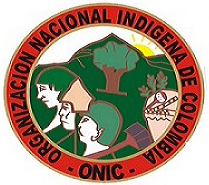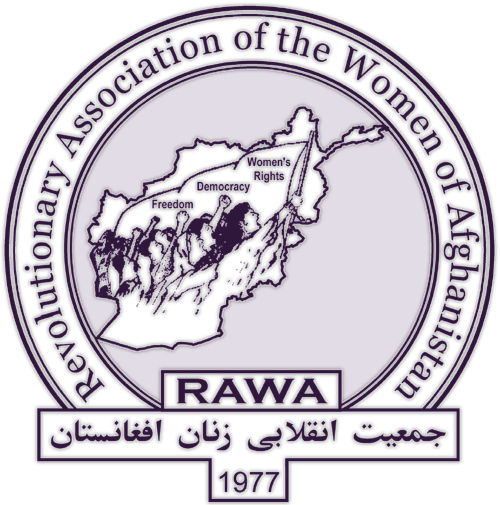mining
Trans-Amazon rail project strikes fear in tribes
A controversial mega-project to build a transcontinental railway through the Amazon basin has caused outrage among indigenous people and advocacy groups. UK-based Survival International charges that the rail project, backed by the Chinese government, would cross through many indigenous territories and areas of high biodiversity across the rainforest in Peru and Brazil, opening them to industrial exploitation, illegal mining and logging, and peasant colonization. Survival warns that "uncontacted tribes" would face devastation from invasions into their lands, calling these peoples "the most vulnerable societies on the planet." Whole populations could be wiped out by violence from outsiders and by diseases like flu and measles to which they have no resistance.
Argentina: indigenous summit in Buenos Aires
Indigenous leaders from across Argentina's 17 provinces met in Buenos Aires on May 27-9 to coordinate resistance to dispossession from their ancestral lands by interests of fracking, mining, hydroelectric development and soy cultivation. The First National Summit of Indigenous Peoples was called by the inter-ethnic association QOPIWINI, which since February has been maintining a protest encampment in in downtown Buenos Aires to oppose land-grabs in indigenous territories across the country. The summit was especially called to respond to a recent wave of violent attacks on indigenous protesters—including a Molotov cocktail hurled at the QOPIWINI camp by unknown assailants on April 24.
Turkey: mine disaster survivors face prison
Nine Turkish miners who survived last year's Soma mining disaster face six years in prison for violating the law restricting demonstrations and damaging property during a protest to demand that the bodies of their co-workers be extracted from the mine. The protestors are alleged to have blocked a road and damaged a passing vehicle at a protest to demand justice over the disaster, in which 301 miners died in an explosion on May 13, 2014. The trial for the Soma disaster opened on April 13, during which the 45 suspects, including the eight former managers from the Soma Coal Mine Company denied charges of "killing with probable criminal intent," precipitating anger among the families of the victims.
Peru: one dead in Nazca iron mine strike
One was killed at some 200 reported injured when police fired on striking miners blocking a highway near the Shougang Hierro Perú iron mine at Marcona, Nazca province, in Peru's coastal region of Ica on May 25. At least one other worker suffered a bullet wound. Videos aired on media in Peru show workers chanting "no disparen, no disparen" (don't shoot, don't shoot) at the National Police troops. The strike was called by the FNTMMSP union federation to oppose the layoff of more than 80 workers by subcontractor Coopsol. Strikers were also pressing community demands for reduced electricity rates and a potable water project. All 963 workers at the mine took part in the strike, and the company has not brought contract workers to replace them while talks with the FNTMMSP are ongoing. The FNTMMSP on May 18 called a national strike to protest recent government decrees that allow greater use of subcontractors in the mining sector. The FNTMMSP called off the national strike on May 27. (FNTMMSP, May 27; Correo, Revolution News, LAHT, May 25; Reuters, May 18)
Peru declares martial law at disputed mine site
The government of Peru on May 23 declared a two-month period of martial law in the southern region of Arequipa where residents are protesting the construction of a copper mine. Martial law allows police to enter homes without search warrants, as well as to break up protests and meetings. Southern Copper Corporation plans to build a copper mine known as Tia Maria for $1.4 billion, which residents strongly feel will contaminate the water and air in the region, and will be detrimental to the local farming economy. Protests have continued for over two months and often turn violent, even after the government approved the company's environmental study last year that claimed the company could operate a clean mine. The government had already sent in over 4,000 police officers and 1,000 soldiers to the area to control the protests, which have resulted in the deaths one police officer and three protesters. José Ramos Carrera, mayor of Punta de Bombon, stated that the martial law declaration "shows is that the government wants the mine to go ahead at all costs."
Sichuan repression signals fear of social explosion
Tens of thousands in China's southwestern city of Linshui marched May 16, to be attacked by riot police, leading to street clashes that continued long into the night. The protest was called to demand that a proposed rail line linking Dazhou to Chongqing pass through the city in central Sichuan, which currently has no rail access or airport. Authorities recently announced that the route will instead go through Guangan, seemingly chosen because it is the birthplace of Deng Xiaoping. Epoch Times puts the number of demonstrators at 30,000, and Hong Kong's The Standard reports that five are dead—including a schooolgirl. Radio Austrailia has amazing video footage of brutal police charges, which have apaprently been making the rounds on Weibo and other social media in China. Photos at Revolution News (similarly taken by citizen journalists) show the march filling the streets—with big professionally made banners. Even the most complete English-language account, at South China Morning Post, does not make clear who called and organized the march.
Peru: mine project suspended after deadly protests
Grupo Mexico's Southern Copper Corp on May 15 announced a 60-day halt in its huge Tia Maria project in southern Peru's Arequipa region following seven weeks of escalating protests in which three people have been killed and more than 200 injured. Company president Oscar Gonzalez said in a statement that the "pause" would let all sides air concerns and "identify solutions." Protesters in Cocachacra, the center of the conflict in Islay province, say they have no intention of backing down from their demand that the $1.4 billion project be canceled. Peru's President Ollanta Humala said canceling the project would expose the country to lawsuits and make it less attractive to investors.
Informal miners strike in Colombia
Small-scale gold and emerald miners in Colombia launched a strike Feb. 18, blocking roads at several points across the central department of Antioquia. The strike was called off Feb. 21 when the government agreed to open dialogue on implementation of the new Decree 0276, which mandates that all informal mining operations apply for license with the National Mining Agency's Unified Marketers Registry (RUCOM). Luz Stella Ramírez, leader of the National Miners Confederation of Colombia (Conalminercol), called for the "formalization" of small-scale operations with "repect for the people" engaged in the activity. She also called for the overturn of the "terrorist decree" 2235, promulgated in 2012, which empowered the National Police to destroy mining camps and equipment without an individual judicial order. (El Universal, Cartagena, Vanguardia, Bucaramanga, Feb. 21; La Patria, Manizales, Feb. 19; Cronica del Quindio, Feb. 18; Desde Abajo, Feb. 18; Colombiano, Medellín, Feb. 17)















Recent Updates
7 hours 46 min ago
8 hours 11 min ago
15 hours 31 min ago
17 hours 13 min ago
1 day 8 hours ago
1 day 16 hours ago
3 days 10 hours ago
3 days 10 hours ago
3 days 14 hours ago
3 days 14 hours ago